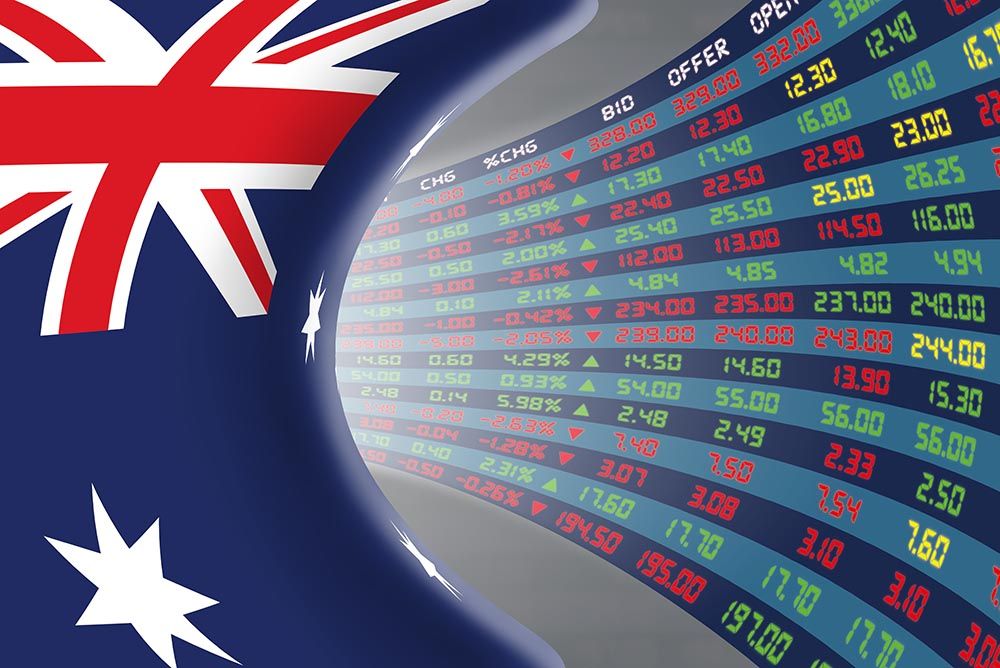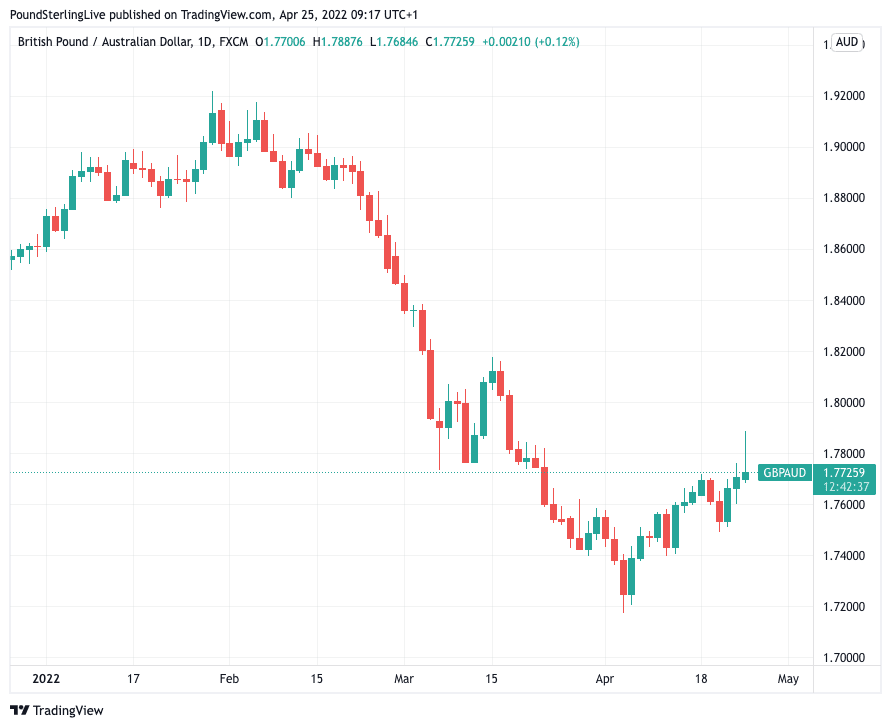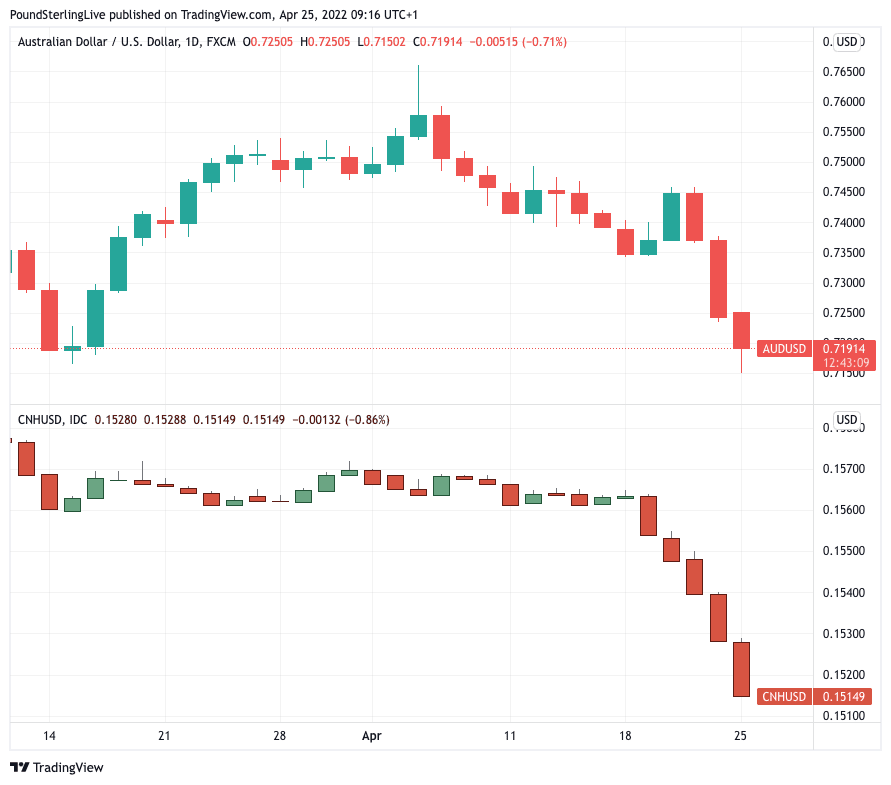Australian Dollar: Chinese Angst Weighs, GBP/AUD Pushes New One-month Highs
- Written by: Gary Howes
- AUD slumps amidst Beijing lockdown fears
- AUD/USD could fall to 0.70-0.71 says ING
- Offering upside to GBP/AUD

Image © Adobe Images
"Commodity currencies in trouble," says FX Strategist Francesco Pesole, in a regular morning note for ING, explaining the losses registered by the Australian Dollar at the start of a new week.
The Australian Dollar and other peers in the commodity currency bloc are under pressure with analysts pointing to fears that China's Covid outbreak is worsening, threatening to slow the economy further.
It is reported a Covid outbreak in Beijing has prompted panic buying amidst fears of a lockdown that would be similar in intensity to that imposed on the residents of Shanghai.
"China’s worrisome coronavirus situation and fears of a wider lockdown in Beijing are rattling financial markets. USD is breaking higher and AUD underperformed most major currencies," says Elias Haddad, Senior Currency Strategist at Commonwealth Bank of Australia.
On Monday morning, the National Health Commission said that 47 coronavirus cases had been found in Beijing since Friday.
Cases have been spreading in the community for a week, with multiple rounds of transmission, Pang Xinghuo, deputy director of the Center for Disease Control and Prevention in Beijing, said at a news conference on Sunday.
"I smell fear of China lockdown impact on demand with Chinese stocks significantly down (-5.4% for Chinext, CSI 300>-4%, etc) & CNH down >-1%," says Trinh Nguyen, Senior Economist, Emerging Asia at Natixis.
"What about contagion? AUD -1.2%," she adds.
China is Australia's largest and key export market, therefore fears of a significant growth slowdown linked to Covid could impact negatively on the country's economy.
The Australian Dollar therefore often serves as a bellwether for investor sentiment towards China.
The Australian Dollar to U.S. Dollar exchange rate was down a percent at 0.7168 at the time of writing Monday, the Pound to Australian Dollar exchange rate was up a third of a percent at 1.7784, although the pair had been as high as 1.7886 earlier in the day. (Set up your FX rate alert here).
Above: GBP/AUD has fallen sharply in 2022, but has recently started to recover some lost value.
Compare GBP to AUD Exchange Rates
Find out how much you could save on your pound to Australian dollar transfer
Potential saving vs high street banks:
A$48.75
Free • No obligation • Takes 2 minutes
"Unstable risk sentiment and China's battle against Covid are raising the downside risks for commodity currencies. At the same time, the PBoC's tolerance to a sharp CNY depreciation may signal a regime shift towards welcoming a weaker currency again," says ING's Pesole.
Pesole says the commodity market is absorbing China’s growth concerns, with energy and metals facing some considerable bearish momentum.
"This is another channel through which AUD and NZD are getting hit. Iron ore, Australia’s main export, fell by nearly 12% in early trading today before paring some of the losses, and we think the fall in AUD/USD might extend into the 0.70-0.71 area in the coming days," says Pesole.
A decline in the AUD/USD exchange rate to 0.70-0.71 would help aid further GBP/AUD upside, provided GBP/USD's fall is slower than that of the AUD/USD.
"Naturally, the implications of unstable risk sentiment and commodity prices correcting lower are spreading to the whole commodity FX segment, which may struggle to find any firm support in the coming days," says Pesole.
Currency strategists are also warning clients to keep an eye on the Chinese Yuan, noting further weakness could be likely:
Above: AUD/USD and the CNH/USD, a lower Chinese Yuan acts as a drag on the Aussie.
As the above chart shows, what happens to the Chinese currency can have implications for the Australian Dollar and therefore offers some insights into the outlook.
"When it comes to the yuan, it will be interesting to gauge whether (or at what point) the People's Bank of China decides to step in to offer some support," says Pesole.
He notes the Yuan remains strong compared to 2019-2020 standards, but that this would still likely welcomed by Beijing as energy costs remain elevated.
"The lack of any intervention by the PBoC despite the elevated downside volatility in CNY may signal that China could be shifting to a more growth-orientated currency management (i.e. welcoming a weaker yuan) at a time when tight containment measures are posing significant risks to the country’s economic outlook," says Pesole.
He says should markets receive more indications that this is the case, selling pressure on the yuan may well continue.
If correct, this could offer further Aussie Dollar downside and GBP/AUD gains.






